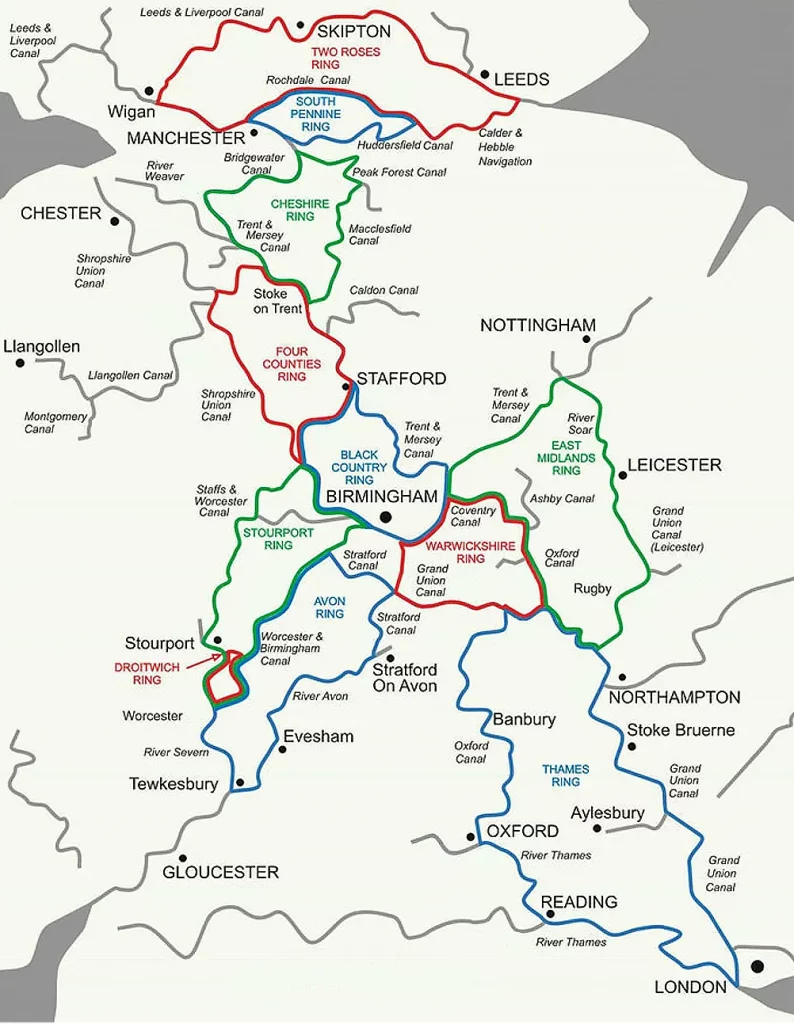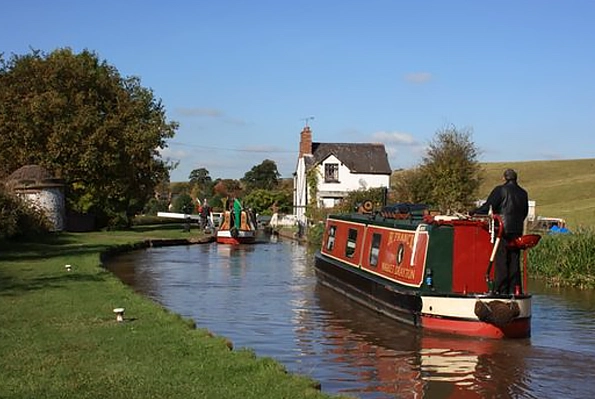What we know today as the Shropshire Union Canal system did not have this title until 1846 when various canal systems were amalgamated and run by the Shropshire Union Railways and Canals Company, later to be bought out by the London North Western Railway Company.
First to be built was the Chester Canal between Chester and Nantwich begun in 1772; twenty-one years later in 1793, the length from Ellesmere Port to Chester was added, under the supervision of engineer Thomas Telford. He master-minded this contour canal, so called because the line of the canal follows the natural contours of the land.
The Montgomeryshire Canal was begun in 1794 and went from the Newtown Basin to Ellesmere via Queenshead and Frankton; it was used primarily for the carriage of lime for agricultural use.
The current Llangollen Canal began life as the Ellesmere Canal in 1797, being constructed by the Ellesmere Canal Company under the direction of Thomas Telford. It was to be built from a connection with the Montgomery Canal at Frankton, to Whitchurch, but the difficulties of the route meant that it had only reached Tilstone Park by 1804. The problem was crossing Whixall Moss, and in order to do this the water level of the Moss had to be lowered by between 5 – 6 feet and the canal built across on a floating bed. Continued peat extraction has caused constant subsidence problems and up to the 1960s British Waterways employed a Moss gang to continuously raise the canal banks to maintain the free board; this has now been superseded by underpinning with steel piling. A branch was started towards Prees Higher Heath but by 1806 this had only got as far as Quinta Brook where lime kilns were being built. The intention had been to use it for the movement of lime again along with coal to fire the lime kilns.
An extension from Trevor to Chester was planned to link Liverpool and Bristol by canal and the construction of the Pontcysyllte Aqueduct was constructed in 1805 by Telford as part of the big scheme, but efforts to extend north from Newtown came to nothing. The link from Tilstone to Hurleston was completed in March 1805, by which time the Middlewich Arm had been completed to connect the Chester Canal to the Trent and Mersey Canal, thus linking up canal traffic from Wales via Whixall and making the canal system profitable. In 1813 the Ellesmere and Chester Canal Companies merged and became the Ellesmere and Chester Canal Company.

Then as the railway network grew fewer goods were transported on the canals; the Weston branch, which joins the Montgomery Canal south of Welsh Frankton was breached in 1917 and the line closed 3 years later because it was uneconomical to repair, leaving only a short length as far as Hordley in operation. The Shropshire Union Canal Society was established in 1966 and in 1987 an Act of Parliament was passed allowing for the full restoration of the Montgomery Canal to begin – the first Act for the reopening of a waterway.
In all the network of canals connected Shropshire with Staffordshire and Cheshire along with the canal system of the West Midlands at Wolverhampton and with the River Mersey and Manchester Ship Canal at Ellesmere Port making the Shropshire Union part of an important circular and rural holiday route called the Four Counties Ring. Its main line was the last trunk narrow canal route to be built in England, being completed in 1835, and was the last major civil engineering accomplishment of Thomas Telford.
